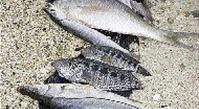
The issue of fresh food affects more than just taste and how well food looks when served.
Food, when not fresh, can also lead to illness and even death, as accumulated bacteria and pathogens react in the body.
Proteins are especially important in this area.
Buy your food fresh and ensure that it remains fresh when stored in your home.
Food-borne illnesses range from upset stomach to more serious symptoms, including diarrhoea, fever, vomiting, abdominal cramps, and dehydration.
Raw meat and poultry may become contaminated during slaughter. Seafood may become contaminated during harvest or through processing.
One in 20,000 eggs may be contaminated with salmonella inside the eggshell. Produce such as lettuce, tomatoes, sprouts, and melons can become contaminated with salmonella, shigella, or escherichia coli.
Not all contaminated food can be detected on sight, but we can do our part in ensuring that we do not become ill.
At home, milk should always be put on a shelf and never on the door. Eggs should be stored in the container they came in. Never use the plastic egg container that comes with some refrigerators.
Eggs need to breathe and the plastic container keeps them from doing so and will cause them to spoil faster. Fresh eggs will last up to three weeks if stored properly.
keep mayonnaise for only two months
Condiments kept in the fridge will last up to a year, except mayonnaise, and that should be kept only for two months.
The most dangerous part of condiments is cross contamination. Be sure to always use a clean utensil that has not touched other food, before putting the knife or fork into the jar.
When purchasing fish, look for firm, shiny flesh. It should bounce back when touched.
A fresh fish should not smell fishy, but should have the odour of the ocean such as a fresh ocean breeze. Check the eyes of the fish. If the head is on, fresh fish should have clear eyes, no cloudiness should be present. They should bulge a little.
Check the gills. If whole, they should be bright pink/red and wet, not slimy or dry. The fish gills should be free from any yeasty aroma and slime. Slime in the gills is usually a bacterial slime.
Check cuts of fish. Fish fillets and steaks should be moist and without discoloration. When lightly pressed, the flesh of fresh fish should be quite resilient and bounce back; the older it gets the more likely it is that the indent will remain or slowly bounce back.

Egg farmer Julie Anderson sorts her product.- file photos

River and sea fish ready for cleaning and seasoning.

Tomatoes ready for the market.

